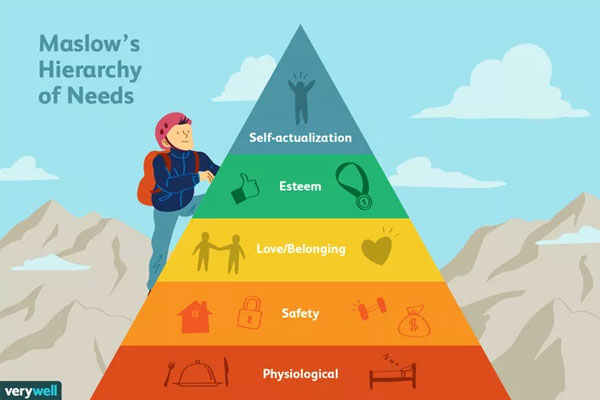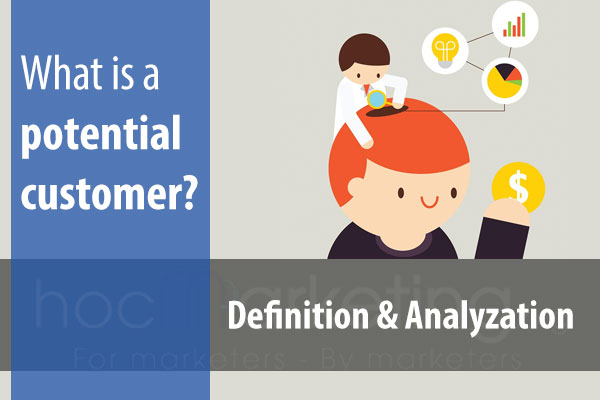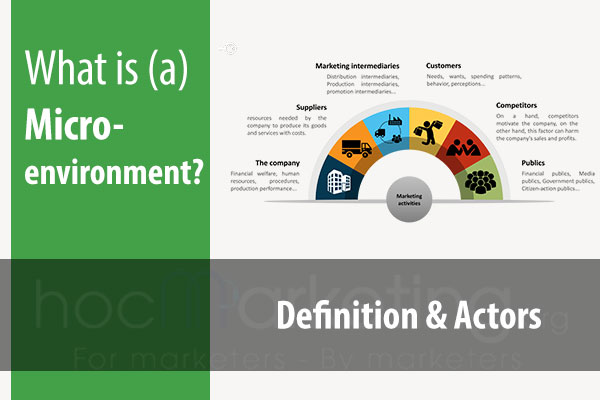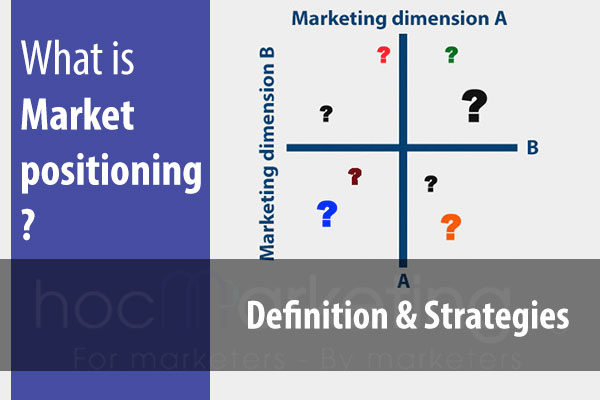
What are needs, wants & demands? Definition & Differentiation

What are needs? What are wants? What are demands in Marketing? What is the difference between needs and demands in marketing?
The enterprises with effective marketing activities always spend many resources on researching needs, wants of customers, as well as demands that enterprises are trying to achieve. What is the difference between needs, wants and demands? Let’s figure out in this article.
What are needs in Marketing?
Needs are states of felt deprivation, psychological states when you feel in short of something required for your physical and mental welfare. Example: needs of food (food, drinks), shelter (house, apartment), cloth, love, belonging...
Everyone has different needs, depending on life circumstance, financial condition, age, gender, health condition,... Human needs will always change overtime in different locations. In order to provide a better understanding, let’s look at the Maslow’s hierarchy of needs below:
Image author: verywell
Looking at Maslow’s hierarchy of needs, you can see the 5 levels of needs arranged from the lowest one to the highest one which means that human needs don't occur randomly but completely ordered, from low to high. When the lower-level needs are adequately fulfilled, a person can move on to addressing the higher-level needs.
Level 1 - Physiological needs: People living in harsh environments, difficult financial conditions and life always have essential needs for physiology (food, drink, clothing, shelter...)
Level 2 - Safety needs: When people’s physiological needs are satisfied, they tend to become concerned about safety needs, such as safety against accidents and injury, steady job, good health for work...
Level 3 - Love/Belonging needs: when both people’s physiological needs and safety needs are satisfied, love/belonging needs will occur. Example: intimacy, acceptance, receiving and giving affection...
Level 4 - Esteem needs: Needs to be respected, regarded and admired by others in society.
Level 5 - Self Actualization needs: When all of lower-level needs have been satisfied, people will tend to the highest level of hierarchy. It’s time when they want to express themselves, meaning that they want to be recognized as talented in a certain field, such as art, science, politics, business...
The Maslow's hierarchy of needs will help marketers catch up easily with the needs of customers.
What are wants in marketing?
Wants are needs formed and adjusted by people's characteristics such as gender, character, cognition, health conditions... and the surroundings we live in such as politics, institutions, culture...
For example: asian women prefer motorbikes with compact soft-tone color design while men prefer ones with strong, sharp and bold-color design.
Knowing customer's needs and wants are determinate factors for the development of products to satisfy best those needs.
What are demands in marketing?
Demands are needs which are able to be satisfied by the act of purchasing a product or service. In other words, demands are needs of people having enough money to purchase products or services supplied by your business.
The difference between the needs and the demands in definition is solvency, meaning the ability to pay for a product or service. For example, i the results of a market research say 500 farmers in need of biological fertilizer, but only 400 of them have solvency (can pay to own products of a company), the number of demands is 400.
Roles of needs in Marketing
In modern marketing, the role of needs is the starting point of almost all activities, strategies, marketing plans of companies. Customer needs are always researched by companies to develop products, services properly. Besides, changes of factors in the macroenvironment causes customer needs to change overtime. A company always observes, researches target customers to capture the change of needs to make suitable actions in business.
Needs affect Marketing strategies
Needs are the basic requirements that individuals have in order to survive and thrive. In marketing, needs refer to the goods and services that consumers require to fulfill their basic necessities. Understanding the needs of consumers is crucial for businesses to develop effective marketing strategies.
Marketing strategies are the plans and actions that businesses take to promote their products or services to their target audience. Needs play a significant role in shaping these strategies. By identifying the needs of their target audience, businesses can tailor their marketing efforts to meet those needs.
For example, if a business is targeting consumers who have a need for healthy food options, their marketing strategy may focus on promoting the nutritional benefits of their products. On the other hand, if the target audience has a need for convenience, the marketing strategy may focus on the ease of use and accessibility of the product.
In addition, understanding the needs of consumers can also help businesses to differentiate themselves from their competitors. By identifying unmet needs in the market, businesses can develop unique products or services that cater to those needs, giving them a competitive advantage.
Overall, needs are a critical factor in shaping marketing strategies. By understanding the needs of their target audience, businesses can develop effective marketing plans, product development processes, pricing strategies, distribution channels, and promotional campaigns that meet those needs and drive sales.
Needs affect Marketing plans
Marketing plans are crucial for any business to succeed in the market. These plans outline the strategies and tactics that a company will use to promote its products or services to its target audience. Needs play a significant role in shaping these marketing plans.
Firstly, needs help businesses identify their target audience. By understanding the needs of their potential customers, businesses can create marketing plans that are tailored to meet those needs. For example, if a company is selling baby products, they will target new parents who have a need for baby products.
Secondly, needs help businesses determine the marketing mix. The marketing mix includes the product, price, promotion, and place. By understanding the needs of their target audience, businesses can create a marketing mix that is aligned with those needs. For example, if a company is selling luxury products, they will set a higher price point and focus on premium promotion channels.
Thirdly, needs help businesses create a unique selling proposition (USP). A USP is a statement that sets a business apart from its competitors. By understanding the needs of their target audience, businesses can create a USP that resonates with their potential customers. For example, if a company is selling eco-friendly products, their USP could be that their products are environmentally friendly.
Needs affect the product development process
Needs affect the product development process in marketing by providing a clear direction for companies to follow when creating new products. Understanding the needs of the target market is crucial in developing products that will meet their demands and expectations.
The product development process starts with identifying the needs of the target market. This involves conducting market research to gather information about the target market's preferences, behaviors, and needs. Once the needs are identified, the company can start developing a product that will meet those needs.
The next step in the product development process is designing the product. The design should be based on the needs of the target market, ensuring that the product will be attractive and useful to them. The design should also take into account any constraints, such as cost or manufacturing limitations.
After the design is complete, the product is then developed and tested. The testing phase is crucial in ensuring that the product meets the needs of the target market. Testing can involve focus groups, surveys, or other methods of gathering feedback from potential customers.
Once the product is developed and tested, it is ready for launch. The launch should be accompanied by a marketing campaign that highlights the product's features and benefits, and how it meets the needs of the target market.
Needs affect how the company set the prices
In marketing, needs play a crucial role in determining the pricing strategy of a company. Needs refer to the basic requirements that individuals have, such as food, shelter, and clothing. These needs are essential for survival and are considered the most important factor in determining the pricing strategy of a company.
When a company is setting its prices, it needs to consider the needs of its target market. For example, if the target market is low-income earners, the company needs to set prices that are affordable for them. On the other hand, if the target market is high-income earners, the company can set higher prices.
The needs of the target market also affect the pricing strategy in terms of the product features. If the target market has a need for high-quality products, the company needs to set higher prices to cover the cost of producing such products. Conversely, if the target market has a need for low-cost products, the company needs to set lower prices to attract customers.
Another factor that needs affect in pricing strategy is the competition. If the company is operating in a highly competitive market, it needs to set prices that are competitive with other companies in the market. This means that the company needs to consider the needs of its target market and set prices that are affordable and competitive.
Needs affect how the company build the distribution channel
In marketing, a distribution channel refers to the path that a product takes from the manufacturer to the end consumer. The distribution channel is a crucial aspect of marketing as it determines how the product will reach the target audience. Needs play a significant role in how a company builds its distribution channel.
Firstly, a company needs to identify the needs of its target audience to determine the most effective distribution channel. For instance, if the target audience prefers online shopping, the company may opt for an e-commerce platform as its primary distribution channel. On the other hand, if the target audience prefers physical stores, the company may choose to distribute its products through retail stores.
Secondly, needs affect the choice of intermediaries in the distribution channel. Intermediaries are individuals or organizations that help in the distribution of products from the manufacturer to the end consumer. For example, a company may choose to use wholesalers or distributors to reach a wider audience. The choice of intermediaries is influenced by the needs of the target audience and the company's marketing objectives.
Thirdly, needs affect the level of control that a company has over its distribution channel. A company may choose to have a direct distribution channel where it has complete control over the distribution process. Alternatively, the company may opt for an indirect distribution channel where it relies on intermediaries to distribute its products. The choice of distribution channel is influenced by the needs of the target audience and the company's marketing objectives.
Needs affect how the company building promotional campaigns
Needs are an essential aspect of marketing that plays a significant role in shaping the promotional campaigns of a company. In marketing, needs refer to the basic requirements that individuals must have to survive and thrive. These needs can be physiological, safety, social, esteem, or self-actualization needs.
When building promotional campaigns, companies must consider the needs of their target audience. By understanding the needs of their customers, companies can create campaigns that resonate with them and address their pain points. For instance, if a company is selling food products, they must create campaigns that highlight the nutritional value of their products, which addresses the physiological needs of their customers.
Moreover, needs can also influence the messaging and tone of promotional campaigns. Companies must use language that speaks to the needs of their customers and positions their products as the solution to their problems. For example, if a company is selling security systems, they must create campaigns that highlight the safety needs of their customers and position their products as the best solution to address those needs.
Marketing research is the most effective method to capture the needs of target customers. Depending on the industry, the field that research activities can be done by many different methods and scales, from utilizing available data to conducting surveys.
Summary
In conclusion, understanding the differences between needs, wants, and demands is crucial for any marketer. Needs are the basic requirements for survival, while wants are the desires that go beyond basic needs. Demands, on the other hand, are wants that are backed by purchasing power. By recognizing the roles that needs play in marketing, companies can develop effective marketing strategies, plans, and products that meet the needs of their target audience. They can also set prices, build distribution channels, and create promotional campaigns that resonate with their customers. Ultimately, by focusing on the needs of their customers, companies can build strong relationships and drive long-term success.




















